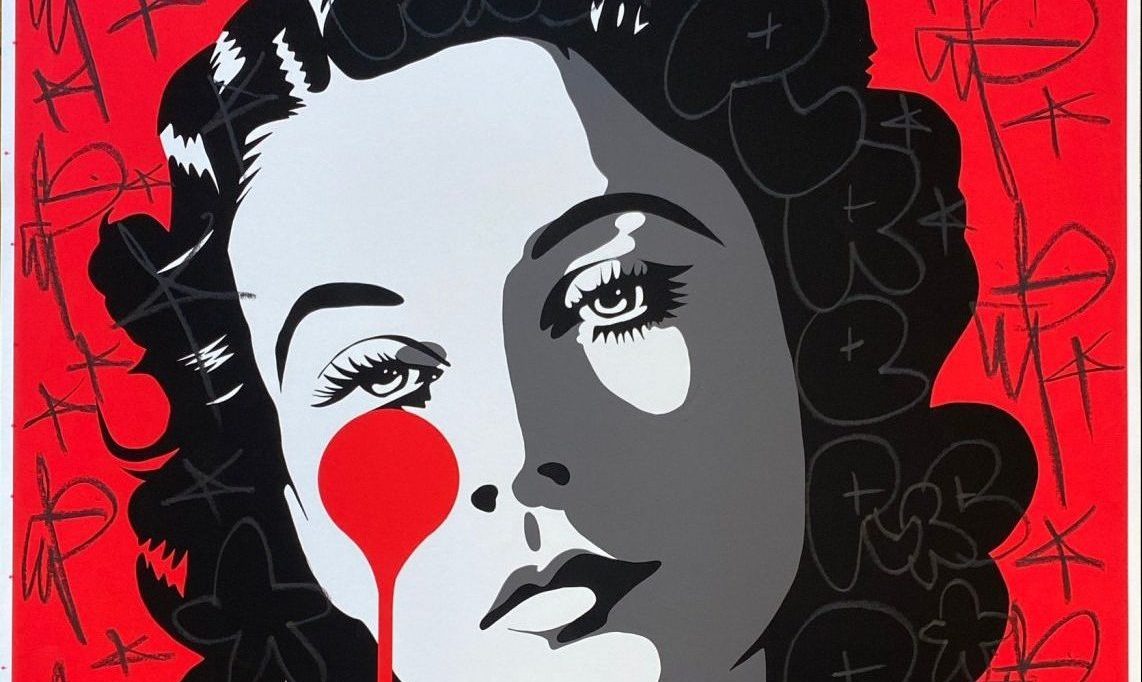Interview with Charles Uzell-Edwards AKA Pure Evil
Pure Evil, also known as Charles Uzzell-Edwards, is a graffiti artist who has exhibits all over the world and owns two art galleries in Shoreditch. He is well-known in the art world for his signature pop art/street art style. Charles has been painting for a while, having exhibitions in countries including China, Hong Kong, Mongolia, Brazil, and the United States, alongside numerous European locations. This interview delves into Charles’ journey in the art industry; who inspired his name and style; how his years in San Francisco influenced his career, and what Charles’ future goals are.
So you mentioned you have a gallery in Shoreditch; how did you start it?
“[I have] two galleries in Shoreditch. Street artists are like a big family, and I wanted to show their work as well, whilst simultaneously specialising in street art. When I started my gallery, I just got a space, and produced loads of press articles stat- ing that I had a gallery. Doing graffiti in different places like Barcelona, Berlin,
and Sao Paolo helped me understand that internationally, there were a lot of artists who were not shown in the UK. Whenever I was traveling around, I was meeting up with different artists, and I would invite them to come and do shows. Part of the gallery enabled me to sell my work, and most galleries take 50% commission; I was only taking 25% of other artists.”
What inspired the name ‘Pure Evil’ and the signature bunny?
“I shot a rabbit when I was a kid, and I was a bit traumatised by it. My cousins gave me a shotgun, and it was a shock as I was playing the hunter game. The character that I draw all the time while I’m doing my tags is in memory of that, and I believe we are animals like all other animals, and there- fore we do not have dominion over other animals, causing me to become a vegetarian and protesting cruelty to animals.”
What artists were most influential to your art career and why?
“My father was an artist too, so a lot of my influential figures came from reading his books and looking at his art collection. Jean-Michel Basquiat and a lot of pop artists in the 1960s and 1970s influenced my style today, such as Andy Warhol, Roy Lichten-Stein, and Keith Haring. They all played a key role in developing my career. I’ve even been going back to earlier artists such as Picasso, who played a key role in forming my career. My dad had every single book about him.”
You mentioned you moved to San Francisco during the 1990s; did its graffiti and street art boom influence your style today?
“After graduating from university, I moved to San Francisco, where there was a lot of poetry in the form of graffiti on the streets. There was a lot of anti-consumerist art in the streets, and as a skateboarder, it gave me a unique perspective of the city. There were many psychedelic raves, which resulted in a rave scene conversion, with people from Silicon Valley, Hell’s Angels, and chemists all enjoying these scenes.”
Describe your time at Anarchic Adjustments and which two moments most shaped your art style and why?
“Anarchic Adjustments was a critical period in my career shaped by street art and BMX culture. The brand was a synthesis of these worlds, establishing a space where the rebellious spirit of street art and the dynamic movement of BMX clashed. “Two pivotal moments in my artistic development stand out. The first was a tragic incident in which an employee committed a shooting in a shop in San Francisco. This horrifying event made me realize something very important: art can be a way to be an upstander. As a protest against gun violence, I spray-painted ‘murderers’ outside the gun store that supplied him with the weapons. ”
How do you think AI will impact the art industry in the next couple of years, and your career as an artist?
“I use AI, not for creating art itself – I still believe [that] should be done manually – but [I believe it is incredibly valuable] for research, and I think that’s how it will impact the art industry. A lot of people will lose their jobs due to AI, yet there will be a lot of jobs created and I see technology as a tool. There was a new show that I made that came out on November 3 entitled ‘Welcome Machine Overlords’, where I asked ChatGPT to give me 100 names of actors, so I could make artworks of them. This is how I believe artists should utilise AI.”
What advice do you have for people who want to start working in the art industry now, and how would you start if you do it in the 21st century?
“You must be like an octopus – learn about technology, social media, learn about art history, and study a lot of people who have come before. My biggest inspiration was Leo Castelli who was the gallerist for all the pop artists. But depending on the movement you want to focus on, you should research and take inspiration from the key gallerist[s] and successful people in the movement you want to follow. “Having an ego is also somewhat important. You must think that you are doing something great and that you are the next big thing. People will only take you seriously if you act like that. I call this era the ‘culture of the thumbnail’ as the first time anyone will see your artwork will be through a little image they receive on their phones. So, if you want to stand out, focus on presenting yourself in the best way.”

Comments